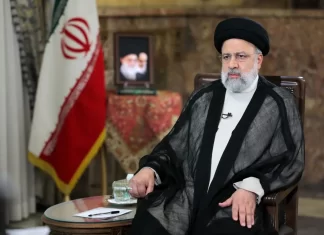The meditation/yoga business is flourishing. Soon, it appears, every sub-urban town will have its regular classes in yoga meditation for health and freedom from neurosis, and every college campus will have its yogi in residence.
Despite the popularity of meditation as put forward by various yogis and meditation societies, few people know the true meaning of meditation. According to the Vedic scriptures, the original source from which knowledge of yoga flows, most forms of meditation are virtually impossible to perform in the modern world, and therefore one should learn to meditate by the simple method of chanting and hearing the Hare Krishna maha-mantra.
One may find the Vedic directions for true meditation in the sixth chapter of Bhagavad-gita, which explains that the goal of meditation is to absorb the mind in Krishna consciousness and enable one to see the transcendental four-armed form of Visnu within his heart. This system of meditation entails many difficult austerities. One must sit in a rigid posture in a sacred and secluded place, completely control the body’s urges for sensual gratification, and utterly renounce sex. The scriptures say that such meditation was indeed possible in Satya-yuga, an age-long past when men lived for 100,000 years and the celebrated Valmiki Muni, the author of the epic Ramayana, meditated for 60,000 years to achieve perfection.
But in the modern age, Kali-yuga, the Age of Quarrel, such meditation is practically impossible because there is no guarantee that one will live for even 60 years. The so-called meditation now practised in our modern cities may provide a lucrative business for the shrewd few who teach it; but in achieving the real goal of yogic meditation, it has no practical value.
Despite the great difficulties of meditation in this age, however, the scriptures describe Kali-yuga’s one great facility:
kaler dosa-nidhe rajann
asti hy eko mahan gunah
kirtanad eva krsnasya
mukta-sangah param vrajet
“This age of Kali is an ocean of faults, but it offers one great advantage: in this age, one can attain liberation simply by chanting the holy name of God” (Srimad-Bhagavatam, 12.3.51).
Therefore, those who are sentimentally meditating but do not know the true meaning of meditation should stop wasting their valuable time and chant the holy names of God as found in the maha-mantra: Hare Krsna, Hare Krsna, Krsna Krsna, Hare Hare/ Hare Rama, Hare Rama, Rama Rama, Hare Hare.
How to make beads
One may chant either loudly, so that others may also join in hearing and chanting, or softly on beads for personal meditation. For personal chanting, one may purchase beads in any hobby store. Tie a knot about six inches from the end of a long string, and then string 108 beads, tying a knot after each one. Then pull the two ends of the string through one large head bead, making a total of 109. Tie a tight knot right next to the head bead, and cut off the excess string.
How to chant on the beads
To meditate using the beads, hold them in your right hand. Hold the first bead with your thumb and middle finger and chant the complete maha-mantra. Then go to the next bead, holding it with the same two fingers, and again chant the entire maha-mantra. Then go on to the next bead and then the next, continuing in this way until you have chanted on all 108 beads and have come again to the head bead. Do not chant on the head bead. Turn the beads around and chant on them in the opposite direction, one after another. By chanting on all 108 beads, from one side of the head bead to the other, you will have completed one ‘round’.
Although there are no hard and fast rule for chanting; if possible, one should try to chant 16 rounds daily and also give up the four habits of materialistic life: (1) eating meat, fish and eggs, (2) taking intoxicants such as liquor, coffee, tea and cigarettes, (3) indulging in illicit sex (sex performed outside of marriage or with contraceptives) and (4) gambling. To gain the greatest benefit from chanting, one should also read a portion of Bhagavad-gita as it is every day.
What is the maha-mantra?
In Sanskrit, maha means “great”, mana means “mind”, and tra means “deliverance”. The maha-mantra, therefore, is the “Great Chanting for Deliverance of the Mind”. Especially in our complex modern society, many unwanted thoughts and anxieties cloud the mind. But the chanting of the holy names of God, or the maha-mantra, cleanses the mind of all unwanted thoughts and simultaneously fixes it upon Krishna/God.
This fixing of the mind upon God is the basic principle of all meditation, and therefore vibration of the transcendental sound of the Hare Krishna maha-mantra is a simple, authorised and effective method of transcendental meditation. Although the Vedic scriptures recommend many different ways of meditation, such as hafha-yoga, raja-yoga and jnana-yoga, they also conclusively state:
harer nama harer nama
harer namaiva kevalam
kalau nasty eva nasty eva
nasty eva gatir anyatha
“In this age of Kali, there is no other way, no other way, no other way to achieve liberation than to chant the holy name, chant the holy name, chant the holy name of God” (Brhan-naradiya Purana).











